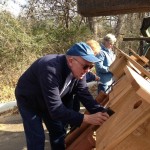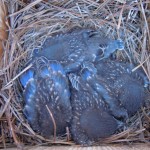 The Bastrop County Audubon Chapter has a checklist of the birds of Bastrop and Buescher State Parks. A hard copy of this checklist is also available for purchase at the Bastrop and Buescher State Parks headquarters. Bastrop County Audubon also has historical Christmas Bird Count overview data, and frequently organizes birding field trips in the Lost Pines. Bastrop Audubon also maintains a list of birding hot spots in the Bastrop area.
The Bastrop County Audubon Chapter has a checklist of the birds of Bastrop and Buescher State Parks. A hard copy of this checklist is also available for purchase at the Bastrop and Buescher State Parks headquarters. Bastrop County Audubon also has historical Christmas Bird Count overview data, and frequently organizes birding field trips in the Lost Pines. Bastrop Audubon also maintains a list of birding hot spots in the Bastrop area.

Texas Bluebird Society – information about bluebirds in Texas and blue bird nest boxes. The Lost Pines area has great habitat for Eastern Bluebirds (Sialia sialis).
For information about monitoring birds in your own back yard, school or a park, check www.birdsource.org. This program, supported by the Audubon Society and the Cornell Ornithology Lab, operates the yearly Great Backyard Bird Count and Project Feederwatch. You can report your avian sightings to their web site, and explore what others have observed in your community. This data is extremely helpful for ornithologists to monitor population sizes of bird species.


